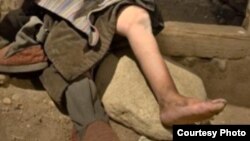Big Bone or Kashin-Beck Disease poses ponderous health risk to tens of thousands of people in many parts of Tibet. It is infact in Tibet where this disease haunts the most, according to some researches. Although it has been found in northern China, North Korea, Mongolia, and Siberia, some reports have stated that the rate of this particular disease is almost disappearing in China. However, not in Tibet.
“The problem is that Tibet is an endemic region, which means the disease is occurring there all the time,” said Dr. Lhamo Sherpa who has spent two years observing the disease. According to Kashin-Beck Disease Foundation, at least in one village “100 percent” of children ages 5 to 15 have symptoms of Kashin-Beck Disease (KBD).
The disease is most prevalence in rural areas under Lhasa City jurisdiction where a clinical prevalence survey suggests 11.4 percent people have symptoms of KBD (Drumbu Tsigchen in Tibetan).
According to Tibet TV, an official news of TAR, the disease is prevalent in Palbar County, Chamdo Prefecture. So, what causes this mysterious disease? Some studies suggested it was iodine and selenium deficiency, and fungal contaminated barley.
The Chinese government has started encouraging Tibetans in some areas to replace their traditional diet, known as tsampa that is made out of barley, with rice.
However, Dr.Lhamo believes a single methodological treatment cannot cure the disease because there are multiple causes to it. She tells VOA's Healthy Lifestyle that the need for further researches and enhancing treatment are crucial to combat the disease.





